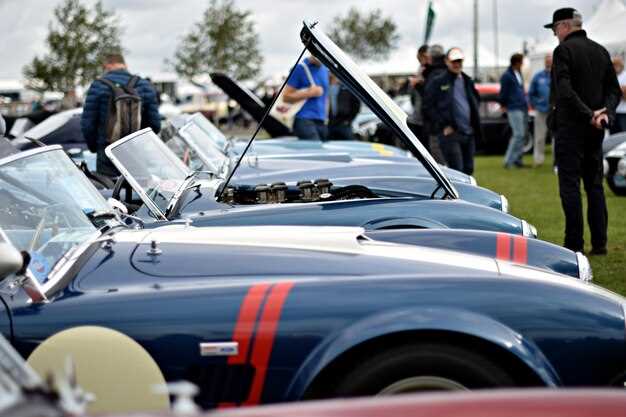

The Balboa Car Show has become one of the most anticipated events in the automotive calendar, drawing enthusiasts from all over to celebrate their passion for cars. Originating in the picturesque setting of Balboa Park, this event showcases a diverse array of vehicles that span decades of automotive history. From classic muscle cars to modern electric vehicles, the show offers something for everyone, making it a must-visit for auto aficionados.
Over the years, the Balboa Car Show has evolved significantly, reflecting changes in the auto industry and the interests of its visitors. The event not only highlights the aesthetic beauty of various makes and models but also emphasizes the technical innovations that have shaped the automotive world. With each passing year, participants and spectators alike come together to enjoy live music, food trucks, and activities that celebrate car culture.
What began as a small gathering of car enthusiasts has transformed into a vibrant celebration that fosters community spirit among those who share a love for automobiles. The Balboa Car Show has not only become an essential fixture in the local calendar but also showcases the enduring appeal of automotive artistry and engineering. Its unique blend of history, culture, and community makes it a fascinating topic for exploration.
Key Milestones in the Evolution of the Balboa Car Show

The Balboa Car Show has seen various pivotal moments that have shaped its legacy in the auto community. Each event has contributed to its rich history, attracting enthusiasts and showcasing remarkable vehicles.
- Inception (1980)
- The first Balboa Car Show was held to celebrate local automotive culture.
- This inaugural event featured a modest number of classic cars and attracted a small crowd.
- Expansion (1990s)
- Increased popularity led to a significant expansion in not just the number of cars displayed, but also the types of events held.
- Introduction of categories for vintage, muscle, and exotic cars.
- Community Involvement (2005)
- Local businesses began sponsoring the event, attracting more visitors and enhancing the overall experience.
- Partnerships with local charities allowed the show to give back to the community.
- Technological Advancements (2010)
- Incorporation of social media to engage attendees and share experiences, boosting event visibility.
- Live streaming of events, allowing car enthusiasts worldwide to join in the excitement.
- COVID-19 Adaptations (2020)
- The show pivoted to a virtual format, ensuring safety while maintaining audience engagement.
- This shift introduced new ways to participate through online presentations and car showcases.
These key milestones have not only defined the Balboa Car Show’s historical significance but also its ability to adapt and thrive in the world of automotive events.
Impact of Auto Events on Local Community Engagement
The Balboa Car Show is not just a celebration of automotive history; it serves as a vital platform for enhancing local community engagement. Auto events like this one foster a sense of belonging among residents and car enthusiasts alike, turning visitors into active participants within the community. Over the years, events have contributed to a burgeoning culture that celebrates not only cars but also the people behind them.
These gatherings create an opportunity for individuals to come together, share their passion for automobiles, and build connections that might not otherwise occur. Local businesses often see an uptick in customers during such events, as attendees flock to nearby shops and eateries, thereby stimulating the local economy. The history of the Balboa Car Show highlights how these interactions help in transforming a simple event into a community-wide celebration.
Furthermore, the educational aspect of auto events cannot be overlooked. Workshops, demonstrations, and informative sessions that feature local history strengthen community ties by imparting knowledge about automotive heritage and craftsmanship. This exchange fosters community pride and encourages younger generations to appreciate and carry forward the legacy of their local culture.
In summary, the impact of the Balboa Car Show and similar events extends far beyond showcasing vehicles; they are instrumental in cultivating a vibrant, engaged community. The shared interest in cars not only rekindles connections among locals but also attracts participants from outside the area, enriching the community with diverse perspectives and experiences.
Exploring Balboa’s Historical Significance in Automotive Culture

The Balboa Car Show is not merely an annual event; it represents a vibrant tapestry of automotive history intertwined with local culture. From its inception, the show has drawn enthusiasts who appreciate the evolution of the automobile, celebrating both classic and modern vehicles. This event acts as a significant marker of automotive trends, showcasing innovations that have shaped the industry over the decades.
Throughout the years, the Balboa Car Show has hosted numerous events that highlight the rich history of various auto manufacturers and models. Vintage cars often take center stage, attracting spectators eager to witness craftsmanship from bygone eras. Each vehicle tells a story about the era it represents, reflecting technological advancements and societal changes, making the event a living museum of automotive heritage.
The influence of the Balboa Car Show extends beyond just displays; it fosters a community of collectors, restorers, and car enthusiasts who share a common passion. Through this annual gathering, participants engage in discussions about automotive history, trends, and the future of the industry. The connections made during these events contribute to a broader understanding of automotive culture, bridging generational gaps and preserving knowledge for future enthusiasts.
In essence, the Balboa Car Show is a celebration of both historical significance and contemporary automotive culture, marking its place as a pivotal event in the realm of automobiles. It reminds us of the enduring legacy that cars have within our society, serving as both a reflection of our past and a glimpse into the future of automotive innovation.





